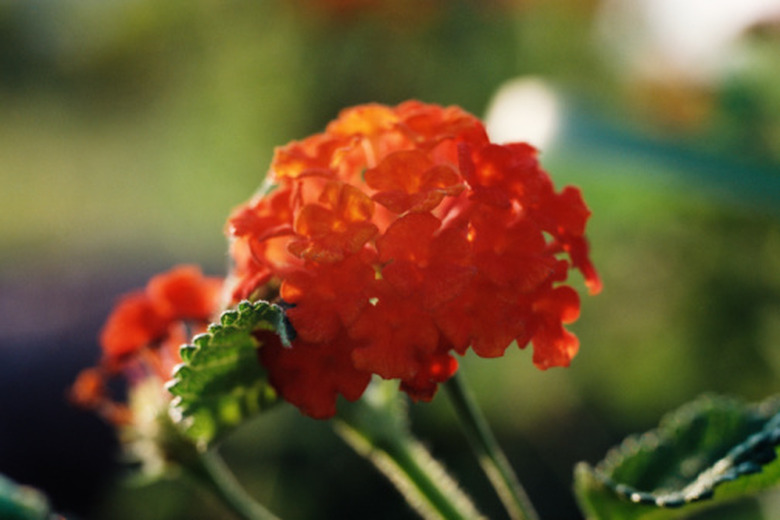The Edges Are Turning Brown On The Leaves Of A Lantana
Lantana is a flowering plant that puts out clumps of brightly colored flowers during the spring and summer. The flowers are framed against a backdrop of dark green leaves; if the edges of the lantana leaves start to turn brown, something is wrong with the plant that requires the attention of a gardener.
Dehydration
A lack of water in the soil, whether from drought or too little manual watering, leads to a lantana with brown-edged, yellowing leaves that eventually curl and drop from the plant. Lantanas benefit from regular rain or watering, and dried-out soil prevents the roots from transferring water and nutrients to the leaves. Water the lantana once each week to keep the soil moist, maintain the plant's health and protect the color of its leaves.
Root Rot
Root rot is a fungal disease that results from excess water in the soil of a lantana. Poorly drained soil or over-watering lead to the growth of this fungal disease, which causes numerous problems for lantanas. As the disease progresses, it causes the leaves of the lantana to wilt and develop brown edges along. Over time, the stems of the lantana are affected as well, which leads to defoliation and drooping. Remove infected plants from the garden.
- Lantana is a flowering plant that puts out clumps of brightly colored flowers during the spring and summer.
- A lack of water in the soil, whether from drought or too little manual watering, leads to a lantana with brown-edged, yellowing leaves that eventually curl and drop from the plant.
Lantana Lace Bugs
Lace bugs are a serious pest problem for lantanas. Lace bugs feed on the leaves, causing the leaves to become yellow and develop brown margins, or become a mottled gray and brown. Serious infestations lead to premature defoliation of the lantanas, which stunts the plants' growth and may prevent the flowers from blooming. Treat lace bugs with a mild pesticide spray, and follow all directions on the package. Pinch off severely damaged leaves to prevent them from hosting diseases.
Botrytis Blight
Botrytis blight, caused by species in the Botrytis genus, which includes Botrytis cinerea, is a fungal disease that causes serious problems for lantana. Signs of blight include browning and wilting at the margins of leaves, wilt and premature defoliation, rotting buds and flowers and twig dieback, according to website of the University of California, Davis. There is no chemical control for botrytis blight, but good cultural control, including cleaning up fallen leaves and avoiding overhead watering, helps stop botrytis blight from killing lantanas.
- Lace bugs are a serious pest problem for lantanas.
- There is no chemical control for botrytis blight, but good cultural control, including cleaning up fallen leaves and avoiding overhead watering, helps stop botrytis blight from killing lantanas.
